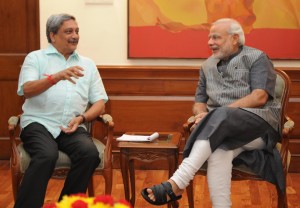
- The biggest importer of arms plans to enter export market in a big way
By JK Verma
New Delhi. 25 July 2016. Defence import to export is too long a bridge to cross for any nation, and more so for India. A nation which is at the top of the list of nations defence importers due to a strategically turbulent neighbourhood and nowhere in the top twenty list of exporters, India has in the last two years started exploring a market for defence exports. And we can only credit Make in India mantra for this change in thought and action of the powers in South Block.
A metallurgical engineer from Indian Institute of Technology, Mumbai, Manohar Parrikar, the Defence Minister is working hard to transmute India from largest importer of military hardware into an exporter of armaments. In fact India should enter the lucrative market of arms export and side by side it can continue to import weapons of cutting edge technology.
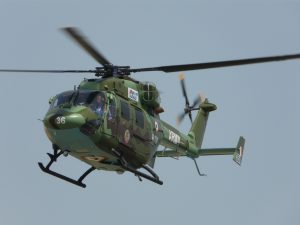
India is also learning a lesson or two from China which is not only the 3rd largest exporter of armaments is also one of the 10 top importer of weapons. China by increasing its indigenous arms production has reduced its imports substantially. China augmented its export of defence items up to USD 1.5 billion in 2014.
It is significant that the present government has circumvented the old idealistic approach of not entering in lucrative arms market with full vigour. India at the time of independence had several ordnance factories and capable pool of talented people but India had not invested in these plants and research was totally neglected. Now country is paying heavy price for the same. India imported military equipment worth USD 5.57 billion last year.
Latest decision of Government of India about enhancing the limit of Foreign Direct Investment in defence sector from 49 percent to 100 percent is laudable as leading foreign defence companies may like to establish their manufacturing units in India. Now the companies will have full control on their investment and can sell weapons to India as well as to other countries.
The defence ministry is simplifying the complex defence production policy and making it more transparent so that indigenous private sector companies also enter in defence production.
The major foreign defence companies would also team up with Indian defence firms like TATA, Mahindra and Mahindra Group, Hero Group, Reliance Anil Dhirubhai Ambani Group, Bharat Forge, Larson and Toubro Ltd. Etc.

According to estimates India’s defence budget may swell to USD 620 billion within seven years. India imported defence equipment worth Rs.103535 crores in last five years while India’s military exports are meager Rs.1644 Crores in last three years. The export figures include exports from 39 Ordnance Factories, five Defence Public Sector Undertakings (DPSUs), four Shipyards as well as private sector companies. In view of the total global annual sale of armaments of USD 64 billion, India’s exports are depressing.
Numerous countries including Afghanistan, Algeria, Belgium, Ecuador, Indonesia, Myanmar, Nepal, Sudan, Vietnam, Oman wants to import arms and ammunition from India. Few technological advanced countries like US purchased flight control panels & forging equipment while MIG and Sukhoi 30 aircraft spares were purchased by Russian Federation and India sold transmitting tubes to United Kingdom.
India also exported Cheetah helicopters to Afghanistan, Dhruv helicopters to Nepal, Jaguar aircraft parts to Oman, Sukhoi 30 and MIG spares to Malaysia and offshore patrol vessels and ammunition to Mauritius for which an agreement of USD 58.5 million was signed between GRSE Kolkata and Republic of Mauritius.
India needs to expand the trifling range of its export items which is insignificant at present. Modi governments’ ‘make in India” campaign may give fruitful results. Several private enterprises would join the campaign and produce quality arms and ammunition. Defence Minister has put an ambitious target of export of armaments worth USD 3 billion within a decade, which is 20 times of present export. According to a senior government official the target can be achieved, if India gets technological knowhow, FDI and investments from private sector.
India should also try to become the member of Wassenaar Arrangement which is one of the four export control regimes as it will be helpful in increasing country’s exports. At present 41 countries are members of Wassenaar Arrangement and India should align its production as well as defence exports according to the Wassenaar Arrangement.
The list includes electronic items, computers, telecommunications, items related o information security, sensors and lasers, marine, navigation and Avionics, Aerospace and Propulsion, tanks, armored vehicles, artillery guns, aircraft and helicopters, warships, missiles, small arms etc. Few countries like China and Israel are not members of Wassenaar Arrangement but are exporting according to its list.
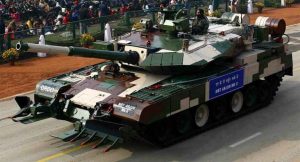
The private sector should immediately chalk out the plan as per Wassenaar Arrangement list and according to their capability they should get permission from government and create infrastructure for the production of weaponry and also try to obtain orders in India as well as from abroad.
India has already become member of Missile Technology Control Regime (MTCR) which will be helpful in export of missiles as well as missile systems. India has already received order from Vietnam to export BrahMos short-range supersonic cruise missile which can be launched from submarines, ships, aircraft and land. BrahMos Aerospace is consistently enhancing the capability of BrahMos missile and it is expected that by 2017 it would achieve the speed of Mach 7.
Besides Vietnam several other countries including Indonesia, Brazil, South Africa, Chile, Malaysia and UAE also showed interest in import of BrahMos missiles as well as other missiles developed by DRDO. Export of BrahMos and other missiles would be a great boost for India’s export and would help to achieve the export target fixed by defence minister.
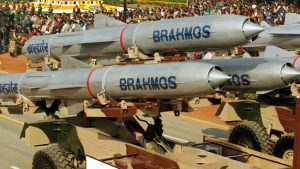
Strategically selling of BrahMos to countries like Vietnam will be significant as it may be a check on China. Previously India was reluctant to sell BrahMos to Vietnam considering the adverse reaction from China however present government has taken a correct decision that if China can sell nuclear technology and missiles to Pakistan then India should not hesitate to sell armaments including BrahMos to Vietnam and other countries.
India should also try to export parts of aircraft, helicopters, naval ships, Airborne Radar systems, ammunition, bombs, torpedoes, and training equipment. India has capability and expertise to produce these items and these articles are in great demand. Modi government has also relaxed the rules which may be helpful in increasing the production and export of defence articles.
India should also try to export land based weapons which will include light and heavy machine guns, assault rifles, landmines, artillery guns, tanks, armored personnel carriers, rockets, small arms etc. There is great demand of these weapons by security agencies of several countries as well as by terrorist outfits. The smuggling of these weapons is also done at large scale. India being an idealist nation may not involve in smuggling of these weapons but these equipment and their ammunition can be sold to governments.
The Research and Development of defence equipment is a very costly and time consuming process. Most of Indian companies lack capability as well as interest in R&D. On the other hand R&D facilities in Public Sector Undertakings are underutilized hence reliable private sector companies may be permitted to use R&D facilities of PSUs.
Export of BrahMos, different types of missiles, aircraft including supersonic Tejas LCA (Light Combat Aircraft) a lightweight, multi role, single engine aircraft, ‘Akash’ a surface to air defence system, Prahar class of tactical missiles system and other defence items would create a big infrastructure which will earn much needed foreign exchange and would generate direct as well as indirect employment opportunities. There is no need to emphasize that LCA Tejas is one of the best fourth generation supersonic fighter jet and several countries have already showed their interest to buy these jets.
The price of these weapons are less in comparison to all the countries including China. In fact Indian price of long-range missiles may be one third or even less than the Chinese price.
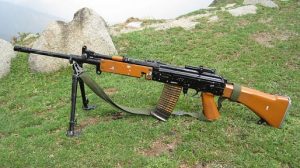
Government has to enhance the grant for research and development, at present DRDO budget is meagre 5to 6 percent of defence budget which is inadequate. It is heartening that the present government is making sincere efforts to augment export of defence items. India having a large pool of young scientists’ country would certainly go ahead in production and export of military equipment.
But there’s a long way to go. Defence Public Sector Units account for more than 80 percent of defense production and are already stretched. The key to this success will be the private industry’s role, involvement and ability to produce on their own and also manufacture in partnership with the foreign OEMs, which they are quite capable and enthusiastic of. So better late than never.
(Jai Kumar Verma is a Delhi-based strategic analyst and a retired R&AW officer. The views in the article are solely the author’s. He can be contacted at editor.adu@gmail.com)





























































































































